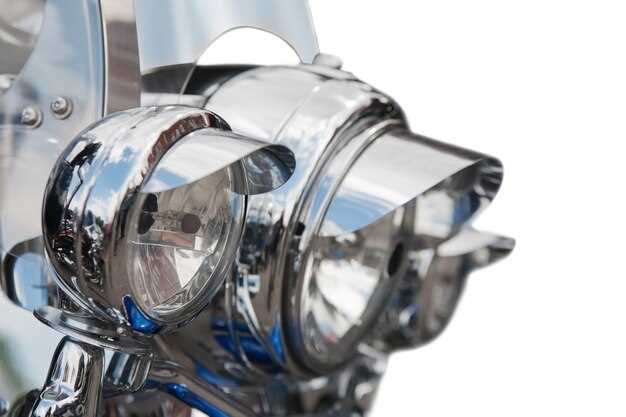
In recent years, the diesel engine has undergone significant advancements in technology, contributing to improved efficiency and reduced emissions. However, the cleanliness of these engines is a critical factor that determines their performance and environmental impact. Understanding how to assess this cleanliness is essential for manufacturers, fleet operators, and consumers alike.
Modern diesel engines are equipped with various components intended to minimize soot and particulate emissions. These include advanced fuel injection systems, turbochargers, and selective catalytic reduction (SCR) systems. Each of these technologies plays a vital role in maintaining engine cleanliness and overall efficiency. As a result, a systematic approach to evaluating these parameters can lead to better maintenance practices and enhanced engine longevity.
Assessing the cleanliness of diesel engines typically involves several diagnostic methods, ranging from visual inspections to advanced analytical techniques. Factors such as fuel quality, regular maintenance, and the implementation of emissions reduction technologies significantly influence the cleanliness levels of these engines. Analyzing these factors enables a comprehensive understanding of operational efficiency and can help in identifying potential areas for improvement.
Understanding Fuel Quality Impact on Engine Cleanliness
Fuel quality plays a critical role in maintaining the cleanliness of modern diesel engines. High-quality diesel fuel contains fewer impurities and contaminates, which directly influences the efficiency of combustion and the formation of deposits within the engine.
One of the primary components of fuel that affects engine cleanliness is the presence of sulfur. Modern regulations limit sulfur content in diesel fuel, as high sulfur levels can lead to the production of harmful particulates during combustion. These particulates can accumulate in various engine components, including injectors and the combustion chamber, resulting in reduced performance and increased emissions.
Another crucial factor is the cetane number, a measure of fuel ignition quality. Fuels with a higher cetane number ignite more readily, leading to more complete combustion. Incomplete combustion results in unburned hydrocarbons and soot, which can coat engine parts, causing wear and degradation over time.
The presence of additives in diesel fuel significantly affects engine cleanliness as well. Quality fuels often contain detergents and dispersants that help to prevent deposit formation and keep fuel injectors clean. These additives reduce injector fouling and maintain proper fuel atomization, ensuring more efficient combustion and minimizing the buildup of deposits.
Storage and handling conditions also impact fuel quality. Exposure to moisture and contaminants during storage can lead to microbial growth and the formation of sludge. If contaminated fuel enters the engine, it can exacerbate cleanliness issues and create potential damage to fuel systems.
In summary, understanding the impact of fuel quality on engine cleanliness is essential for optimizing performance and longevity. Selecting high-quality diesel fuel with low sulfur content, a suitable cetane number, and effective additives can significantly enhance engine efficiency and reduce the risk of deposit formation.
Choosing the Right Cleaning Techniques for Diesel Engines

Selecting the appropriate cleaning techniques for diesel engines is crucial for maintaining their performance and longevity. Various methods are available, each suited for specific applications and types of contamination.
One of the most common techniques is chemical cleaning, which involves using specialized solvents or detergents designed to break down carbon deposits, sludge, and other contaminants. These chemicals can be introduced into the fuel system or applied directly to the engine components. It is vital to choose a product compatible with the engine materials to avoid damage.
Another effective method is ultrasonic cleaning. This technique utilizes high-frequency sound waves to create microscopic bubbles in a cleaning solution. When these bubbles collapse, they produce tiny shock waves that dislodge dirt and debris from engine components. Ultrasonic cleaning is particularly beneficial for intricate parts, such as injectors and fuel pumps, where traditional methods may fall short.
Mechanical cleaning is also prevalent, involving manual or automated methods to physically remove dirt and buildups. Techniques such as wire brushing, sandblasting, or using specialized brushes can effectively restore surfaces but require caution to avoid damaging sensitive components.
For those concerned about environmental impact, eco-friendly cleaning solutions are gaining popularity. These biodegradable products effectively clean without harming the environment, making them an ideal choice for responsible maintenance practices.
Furthermore, high-pressure washing can be employed for exterior engine cleaning, removing grime and dirt build-up. However, care must be taken to avoid directing water into sensitive areas, such as electrical components and air intakes.
Ultimately, the choice of cleaning technique should be guided by the specific issue encountered, the engine’s condition, and environmental considerations. Regular assessments and maintenance can help in determining the most effective approach to keep diesel engines operating efficiently and cleanly.
Evaluating Emission Control Systems for Clean Operation

Emission control systems are integral to modern diesel engines, significantly reducing harmful pollutants released into the atmosphere. These systems primarily consist of turbochargers, exhaust gas recirculation (EGR), diesel particulate filters (DPF), and selective catalytic reduction (SCR) technologies. Each component plays a crucial role in enhancing operational cleanliness and compliance with stringent environmental standards.
Turbochargers boost engine efficiency by recycling exhaust gases to improve fuel combustion, thus lowering emissions. The implementation of EGR further minimizes nitrogen oxides (NOx) by recirculating a portion of the exhaust back into the cylinders. This process dilutes the incoming air-fuel mixture, resulting in a lower combustion temperature and, consequently, reduced NOx production.
Diesel particulate filters are essential for trapping soot and particulate matter generated during combustion. These filters require regular maintenance to ensure optimal performance, as accumulated soot can lead to increased backpressure and inefficient engine operation. Periodic regeneration processes are necessary to burn off trapped particulates, converting them into carbon dioxide and ash.
Selective catalytic reduction technology employs a urea-based solution to convert NOx emissions into harmless nitrogen and water vapor. This system, while effective, focuses on optimal dosing of the urea to prevent issues such as ammonia slip, which can adversely affect air quality. Regular monitoring and adjustments are critical to maintaining the effectiveness of SCR systems.
Assessing the effectiveness of these emission control systems involves continuous monitoring and testing under various operating conditions. Advanced diagnostic tools and onboard emissions testing enable real-time evaluation of system performance, ensuring compliance with regulations while maintaining engine efficiency. Furthermore, manufacturers are increasingly incorporating smart technologies that help in optimizing these systems based on driving behavior and load conditions.
In conclusion, the evaluation of emission control systems for diesel engines is vital in achieving clean operation. Ongoing developments in technology and maintenance practices will play a significant role in enhancing the effectiveness of these systems, ensuring a cleaner environment and better air quality for future generations.




